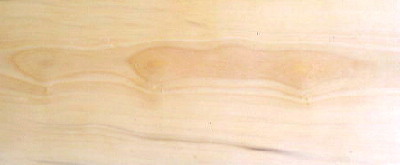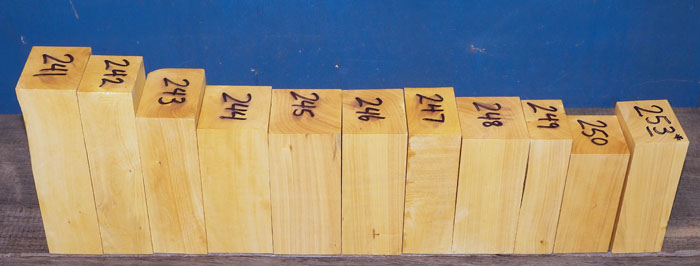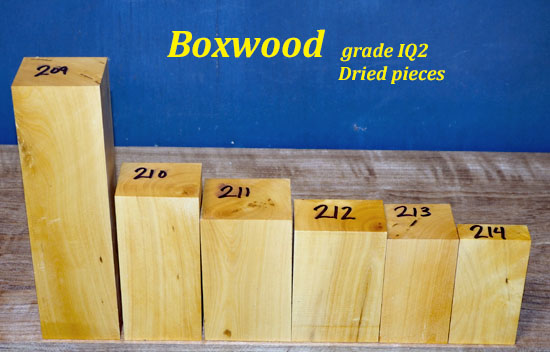Boxwood
Boxwood has been known as a great turning and carving wood for hundreds of years. It has an incredibly fine grain and is an excellent wood for woodturning and even ornamental turning, as it accepts fine details like few woods are capable of. It is expensive owing to scarcity of good material, and the very long time it takes to grow to a usuable size (at least 90 years minimum and even then under unusually good conditions). There are many types of boxwood but sempervirens is the type most often sold on the world market. We have found other boxwood types like buxus macowannii are equal in quality to the best of the sempervirens. The speed the wood grows has an effect on its quality, so the wood from Turkey which grows the fastest and largest usually has grain lines further apart and is therefore not always equal to the slower grown wood. Musical instruments have been made from this wood for hundreds of years, and many survive to this day. Note that the wood is often uniform in color but can have many lines which some people find quite decorative. Most pieces or logs will have at least some lines in them, and some of them have densely packed lines. All logs have some cracks, which always form in all but tiny logs during the drying process. Call us with questions if the pictures do not make clear the piece you are considering. Specific gravity is around .90 or more , with some variance among logs.
Note that when we say “air dried” or “kiln-dried” we mean that the wood has been properly tested with a corrected moisture meter and is known to have less than 12% moisture. 12% moisture is what used to qualify as a kiln-dried piece of wood in the past. Unfortunately, many vendors have started using up to 18% moisture (which is very unstable) to count as kiln-dried and completely wet wood to count as air dried. We don’t make claims of “air dried” or “kiln-dried” unless we know the actual moisture and it is genuinely under 12%. Pen blanks are always sold dried.
























